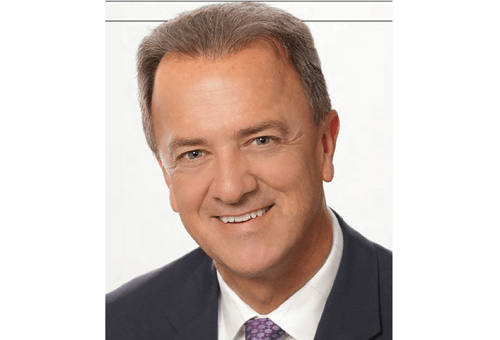Harvest Portfolios president and CEO Michael Kovacs tells WPC how he built the fund manager into a $600 million force in the ETF space

For more than three decades, Harvest Portfolios head Michael Kovacs has been involved in the financial industry. His path has taken him on a unique journey, from beginning his career as a stockbroker, then moving into mutual fund sales and ultimately starting his own company. Along the way, he’s learned a lot of lessons, but he says the biggest one was realizing the need to take a long-term approach to investing.
“I was two years into the business when the stock market crashed in October 1987, and it was a great lesson for me,” Kovacs says. “I was young and learned quickly that the quality of investments is important. I saw my own accounts and the accounts of my clients get hit hard, and I thought there had to be a better way to invest.”
In 2009, Kovacs put those lessons into action when he founded Harvest Portfolios with the principle of remaining focused on the long term.
“I wanted to start a company focused on owning great businesses, investing for longterm performance and growing with those companies over time,” he says. “Harvest is built on long-term capital growth, while generating steady attractive income for our holders. Developing the different funds and portfolios we have, we are predominantly equity, and that ties down to the belief that owning great equities, great companies over the long term will get you great growth.”
To do that, Kovacs and his team have identified key areas to invest in. They focus on large, well established global businesses that have a track record of earnings and paying dividends, have good management teams, and are leaders in their industry. The process begins with a few thousand companies, which the Harvest team quickly pares down using quantitative metrics.
“You boil it down to 50 or 60 pretty quickly,” Kovacs says. “At that point, we roll up our sleeves and get more subjective about what companies we want to position our portfolios with. We look at their position in the industry, their management teams, the products provided and how globally diversified they are.”
Pivoting toward ETFs
While the firm’s strategy has remained the same since its origins, one key change occurred a couple of years ago. “In October 2016, we adopted the ETF structure, building our products around ETFs,” Kovacs says. “A lot of our success has been in the ETF business. It is really where we have focused and where we continue to work.”
When building Harvest’s core ETFs, Kovacs says he looks to use the same underlying strategy in long-term equity growth. Specifically, areas such as healthcare and technology are where he sees some of the best long-term outlooks.
“If you look at demographics around the world, healthcare is an area that’s going to continue to grow as the population ages,” he says. “Technology is only going to become a larger part of our lives. Companies have gone from speculative growth companies to technology giants that continue to build and have become part of our day-to-day, whether transactions, social or whatever it may be.”
Even with his success, Kovacs admits there have been challenges along the way, especially when establishing his business.
“When you are a smaller player, you have to differentiate yourself,” he says. “You need to go out, have a value statement, educate clients as to where you are adding value and how you can be part of their portfolio, and work on that space.”
By doing that, Kovacs was able to build his business from the ground up; Harvest now boasts an ETF business worth $600 million. “It’s working because we are growing,” he says. “Since launching the ETF business, we have had net sales consistently every month. People like what we are doing and continue to support us and grow our business.”
Buffeted by Buffett
When it comes to the market, Kovacs considers himself an eternal optimist, as his long-term approach allows him to adjust to whatever happens.
“I started Harvest in March 2009 and was told I was crazy because it was the bottom of the financial crisis,” he says. “In hindsight, it was the perfect time to start. We are longterm believers in great companies and great organizations and that they will transcend time, markets and cultures. We believe the companies we own will come through good and poor markets. Going back to our longterm philosophy, we are long-term bulls.
Short-term market fluctuations or interest rate directions do not influence how we manage money.”
Even if the market slows, as Kovacs and many others have predicted for 2019, he feels that by investing in those great organizations, Harvest will be able to weather the storm. It’s something he learned from his biggest influence: Warren Buffett.
“I’m a big believer in what he does,” Kovacs says. “He built a tremendous amount of wealth owning great companies and investing in great businesses over many years. That stuck with me throughout my career. I think I stumbled across him in a Forbes article in the late ’80s about being a successful investor. I went from there and started reading more about him and how he invests. I have been down to Omaha a number of times to attend the annual meeting, and I have been a personal shareholder of Berkshire Hathaway for a number of decades.”
Kovacs has taken the lessons learned from Buffett and his own experiences and applied them to his current strategy. The main thing he feels investors get too caught up in today is all the noise in the industry.
“The key is patience,” he says. “Avoid the noise and stick with long-term fundamentals because at the end of the day, you will win that way. I think when we get into hot markets, like we have had recently, people go too far out on the risk curve to get returns, and you don’t need to. If you average 8% or 9% year in and year out, you will win in the end.”



